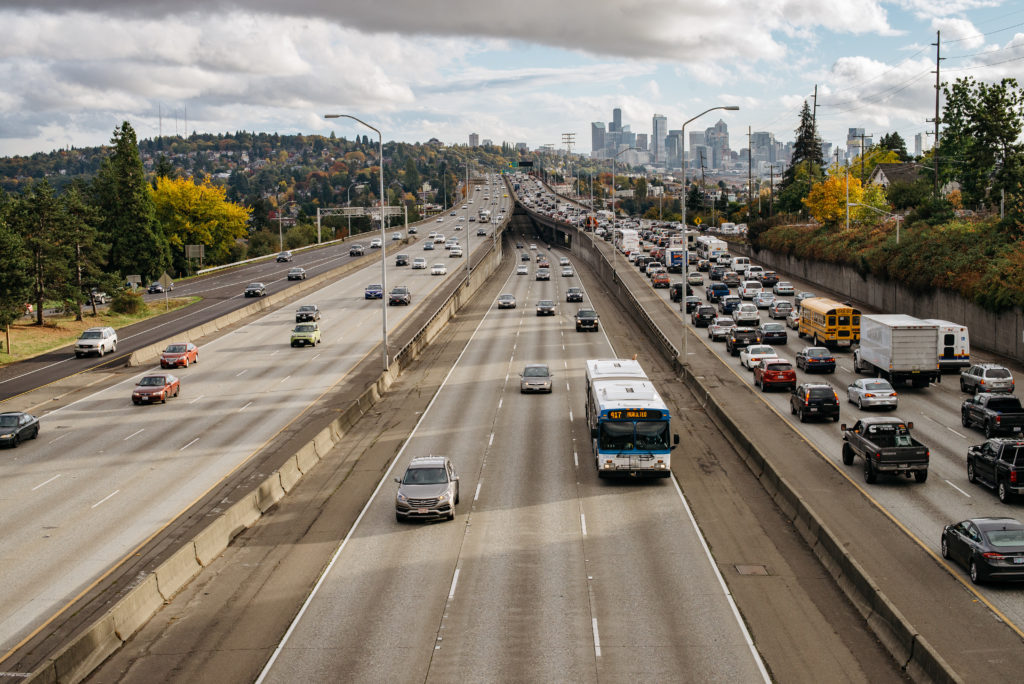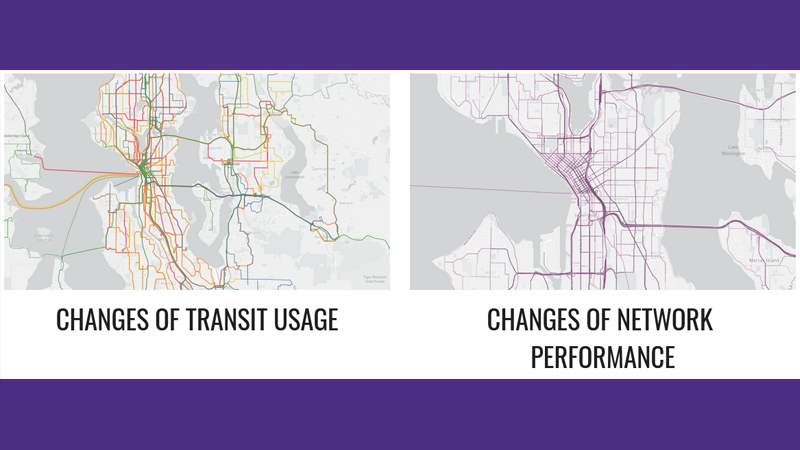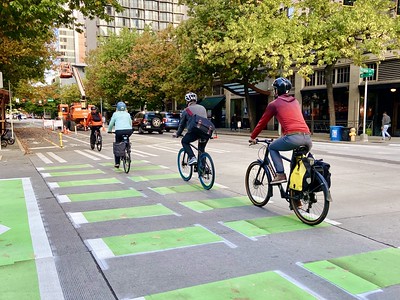
provided by Seattle Department of Transportation
Emerging from the pandemic and finding the “new normal” for regional transportation and mobility
By Bart Treece, Director, Mobility Innovation Center
In the nearly two years since the COVID-19 pandemic changed many aspects of our lives, one of the questions I hear most related to transportation is about the “new normal.”
For traffic and transit use, many transportation agencies tracked and initially relied on 2019 as the baseline measurement, but that’s no longer the case. We don’t expect to go back to pre-pandemic times. Transportation and travel will be different, ideally for the better, for a number of reasons.
Journey to the “new normal”
Many employment sectors adapted quickly and implemented safety measures for people who needed to perform work on-site, while others embraced telework when possible. We are approaching a significant milestone as Microsoft and Expedia, two large tech-sector employers in Seattle, announced plans to reopen their buildings. While we don’t know exactly what people will do as staff return to offices and other employers follow suit, we can gain some understanding of what to expect in the coming months.
UW Return to Work Modeling Project

Initiated by the University of Washington’s Mobility Innovation Center and led by Dr. Xuegang (Jeff) Ban, the project modeled potential scenarios to better understand what to expect and how that would affect transit ridership and system performance. The results assume that telework is here to stay, at least in some form.
Transit agencies are using the modeling to compare it with their own forecasts to determine expected service levels on commuter routes.
Key takeaways from the modeling scenarios
- There is still uncertainty as to what people will do when offices reopen.
- This work aims to evaluate what commuting could look like as the region begins to emerge from the pandemic.
- Telework is poised to remain a factor in peak period commutes as workers begin returning to the office.
- In the majority of the modeled scenarios, transit use is still below pre-pandemic use, with some commuters potentially maintaining telework to some extent, or possibly switching to driving alone.
The scenario modeling work is the result of a partnership with Sound Transit, King County Metro, the Puget Sound Regional Council, and is supported in part by Challenge Seattle.
It will take time for people to settle back into a routine. Additional modeling work is underway using survey data from King County Metro and Community Transit, which will be completed this summer.
Other considerations
When looking at Puget Sound mobility, much has changed since 2019.
- Sound Transit opened the Link light rail extension to Northgate along with three new stations. To support this, Sound Transit, King County Metro and Community Transit shifted service to provide connections for these locations.
- The city of Seattle completed several projects for better biking.
- The West Seattle Bridge closed in 2020 and has been under repair since then. It is scheduled to reopen in mid-2022.
- Looking ahead, Sound Transit will open the light rail East Link extension to Redmond next year.

What’s next?
Think of the new normal as an evolution. We learned a lot during the pandemic. Many cities repurposed street space and expanded room for people to walk, bike, or have a bite to eat. Telework, which has long been a strategy to help manage peak travel demand, has proven effective. Although commuting generates a large share of trips on the transportation system, more are generated by people traveling to shop, socialize, or for family reasons/personal business. In fact, when combined, they comprise a much larger share of trips. As we emerge from the pandemic, how people take transit or use active modes for these trips could make the difference and put us in a much better place than where we started.
Photos courtesy of Seattle Department of Transportation
Housed at CoMotion at the University of Washington, the Mobility Innovation Center helps partners scope near-term transportation projects that address critical challenges through data-based insights, creative ideation, and applied research.